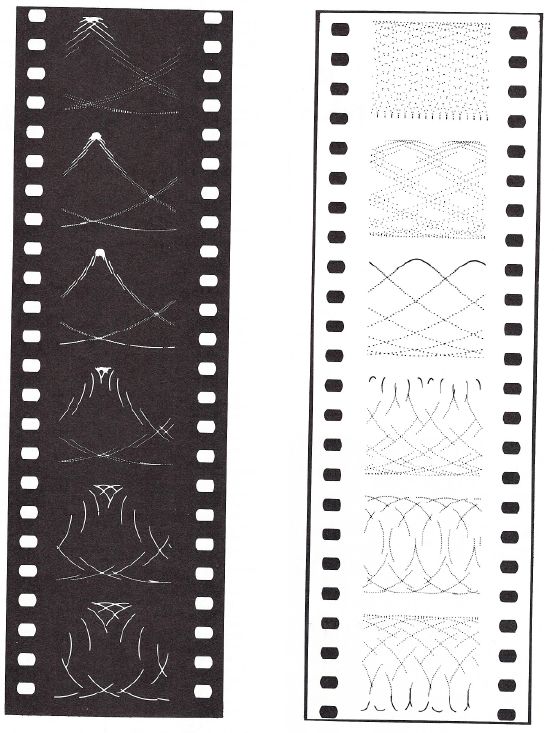John Whitney, Computational Periodics, 1975

John Whitney is the big daddy of computer animation, computer visual fx, and computer animation math expressions. Many overlook the fact that Whitney was creating complex visual fx during the late 1950s and early ‘60s — and unlike most animators, Whitney actually invented many of the processes and machines he used to create his works.
Below are a few block quotes from “Computational Periodics,” an essay Whitney wrote in November 1975. This article adduces the fact that Whitney was a computer art visionary — the Nostradamus of computer animation — a man with a penchant for coddling the inevitable (during Whitney’s time, forthcoming) digital epoch of cinema and media. In the article, Whitney draws some interesting parallels between music, art, and the computer, with incredible foresight.
The computer is the coequal of the entire repertoire of musical instrumentation and heir to that domain of musical sound. At the same time, the computer is the ultimate kinetic image generative instrument. The kinetic image is in truth the creation of computer graphics since the cine or television camera is but a recording device and the hand-drawn image of motion is but a cartoon of motion.
Tatlin, Rodchenko, Gabo, Moholy-Nagy, Fontana, Duchamp, Kandinsky, Mondrian, Pollock and twice that many more artists of this century testify to the drive toward dynamic organization of energy and force in art. And toward ephemeralization of the art object in painting and sculpture. The past decade has seen that direction lead many artists to cinema, exotic technology and experiments with cybernetics. Yet it has passed generally unnoticed that this preoccupation of the last one hundred years has been toward a musicalization of visual art. For the urge to produce abstract architectonic structures that possess fluid transformability in visual space is no less than a grand aspiration toward music’s double in the visible world.
Read the entire article via the Atari Archives.org.
Watch Arabesque here.

